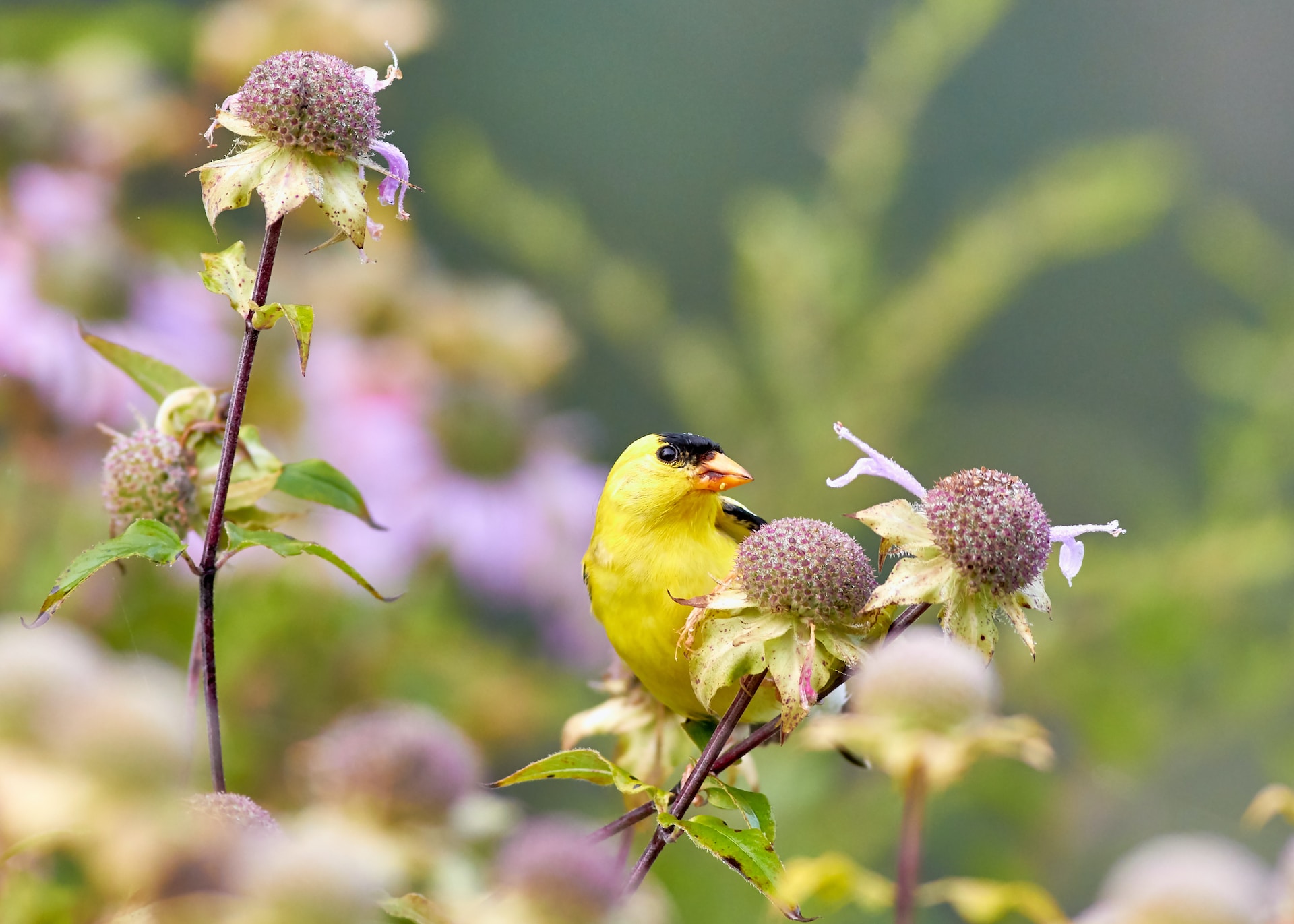The vibrantly colored American Goldfinch is a sight to behold and can commonly be found across the United States, from North Carolina to Washington, and from Maine to California. Populating fields, gardens, and roadsides, these delightful birds are everywhere once you start to look. In the quest to draw these vivid creatures closer, this article will guide you to making your backyard the ideal environment for American Goldfinches, ensuring you have front-row seats to observe their captivating behaviors.
Choosing the Right Bird Feeder and Seed for Attracting American Goldfinches
The first step in attracting these radiant visitors is offering the appropriate food in a feeder they prefer. Goldfinches adore Nyjer seeds. These tiny, oil-rich seeds from Africa are high in fat and protein, which provide the necessary energy for their active lifestyle. According to Birds & Blooms, offering Nyjer seed can turn your yard into a goldfinch hotspot.
When it comes to feeders, goldfinches prefer tube feeders with multiple perches, allowing for group feeding. They are also fond of mesh sock feeders which are specifically designed for Nyjer seed. These feeders allow the birds to cling to the feeder and pluck out seeds, mimicking their natural foraging behavior.
To make the feeding area more appealing, consider the location for placing your feeders. Goldfinches prefer a quiet and safe location – near shrubs or trees which can provide a quick cover from predators. Also, place your feeders in a spot where you can easily view them to enjoy their vibrant beauty.
Providing Fresh Water: The Role of Birdbaths in Attracting Goldfinches
Not only for hydration, goldfinches use water for bathing and preening their feathers. Therefore, a birdbath can be an excellent attraction. Ensure the water is fresh and shallow as goldfinches are small birds and deep water could be a potential hazard.
When selecting a birdbath, opt for one that has a textured bottom to provide a secure footing for the birds. The placement should be somewhat closer to cover but in a high-traffic bird area, where they can feel safe, yet it’s visible enough for you to enjoy watching them.
Maintaining a clean birdbath is crucial to guarantee goldfinches keep visiting. Stagnant water can harbor parasites and diseases, so regular cleaning and refilling are in order. Changed daily, the fresh water will keep goldfinches and other birds coming back to your yard.
Creating Natural Goldfinch Habitats with Native Plants
In addition to feeders and birdbaths, creating a natural habitat by including native plants in your yard would be beneficial for attracting goldfinches. According to Creating Wildlife Habitat, native plants provide natural food sources that can attract a range of birds, including goldfinches.
To increase the appeal, include plants like asters, sunflowers, and milkweed which goldfinches especially favor. These plants not only provide seeds for food but also soft plant materials that goldfinches use for building nests.
To create a plant garden with goldfinches in mind, consider grouping similar plants together and adding variety in height to mimic the natural habitat of the goldfinches. Native plant gardens can not only attract goldfinches but also add to the aesthetics of your yard.
Understanding Flight Patterns of American Goldfinches
Knowing when to expect American Goldfinches can heighten your chances of attracting these beautiful birds. According to Audubon, goldfinches migrate south in late summer and early fall when food starts to become scarce in northern areas.
The changing of the seasons also affects the appearance of these little finches; during winter, American Goldfinches shed their bright yellow feathers for a more subdued brown color. This seasonal change makes them less conspicuous to predators and also more energy-efficient.
Knowing their migration patterns means you can time the setup of your feeders and have your bird-watching eye peeled at the right moments.
Practical Actions that Keep Goldfinches Coming Back
Keeping your feathered visitors coming back requires consistent replenishment of food and fresh water. Feeders should be refilled as soon as they run low, and water sources need to be kept clean and refreshed daily.
Maintaining a safe environment is equally important. The feeders should be placed in predator-free areas, and if possible, include natural covers like shrubs or small trees for the birds to feel secure. Also, avoid using pesticides or chemicals in the vicinity of the feeders and birdbaths.
Lastly, observing and respecting the natural behavior of these beautiful creatures is crucial. Being patient, quiet, and unobtrusive can go a long way in making these birds feel at home in your yard. With these steps in place, your yard will be a bustling hub for goldfinches in no time!

